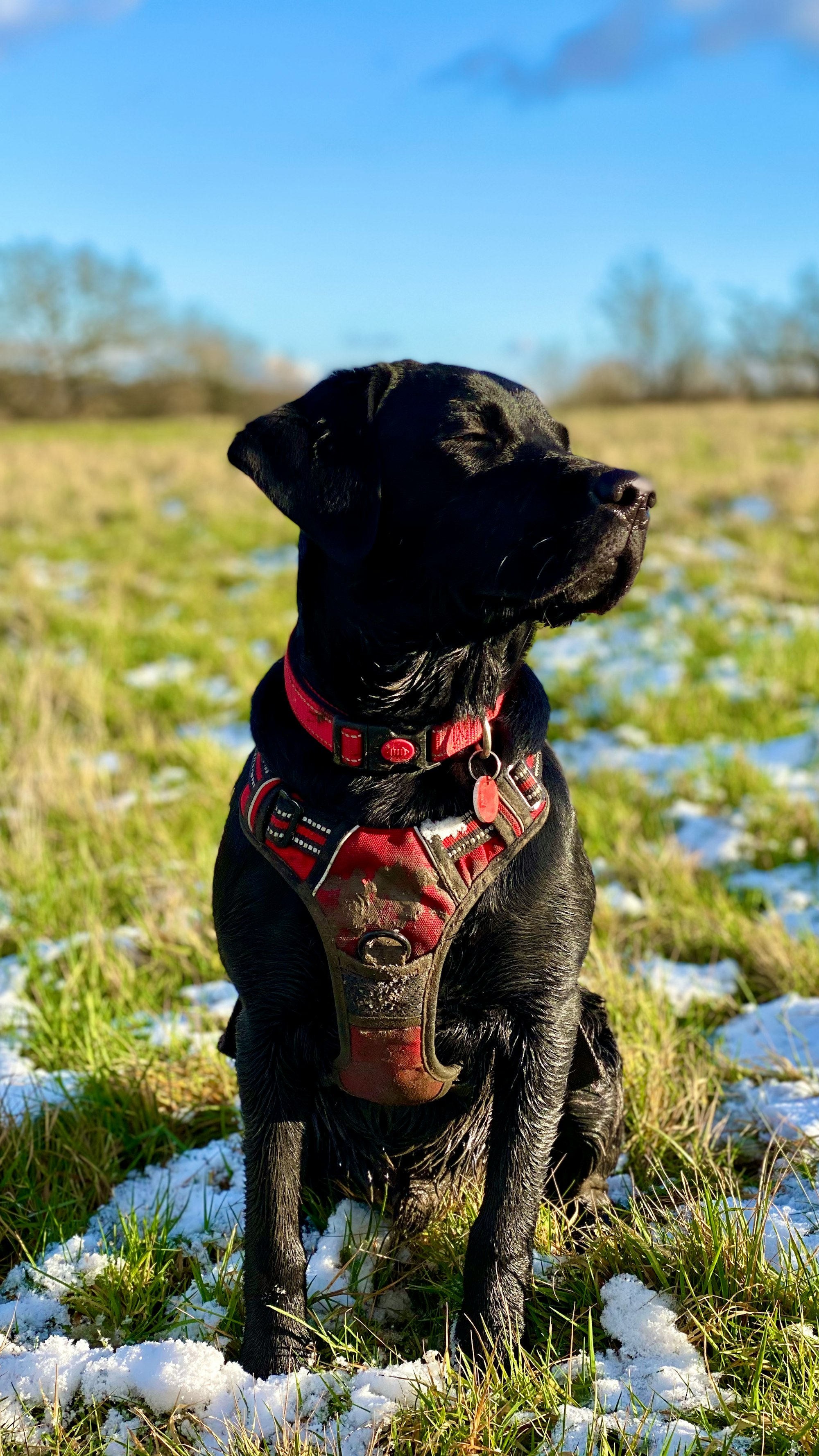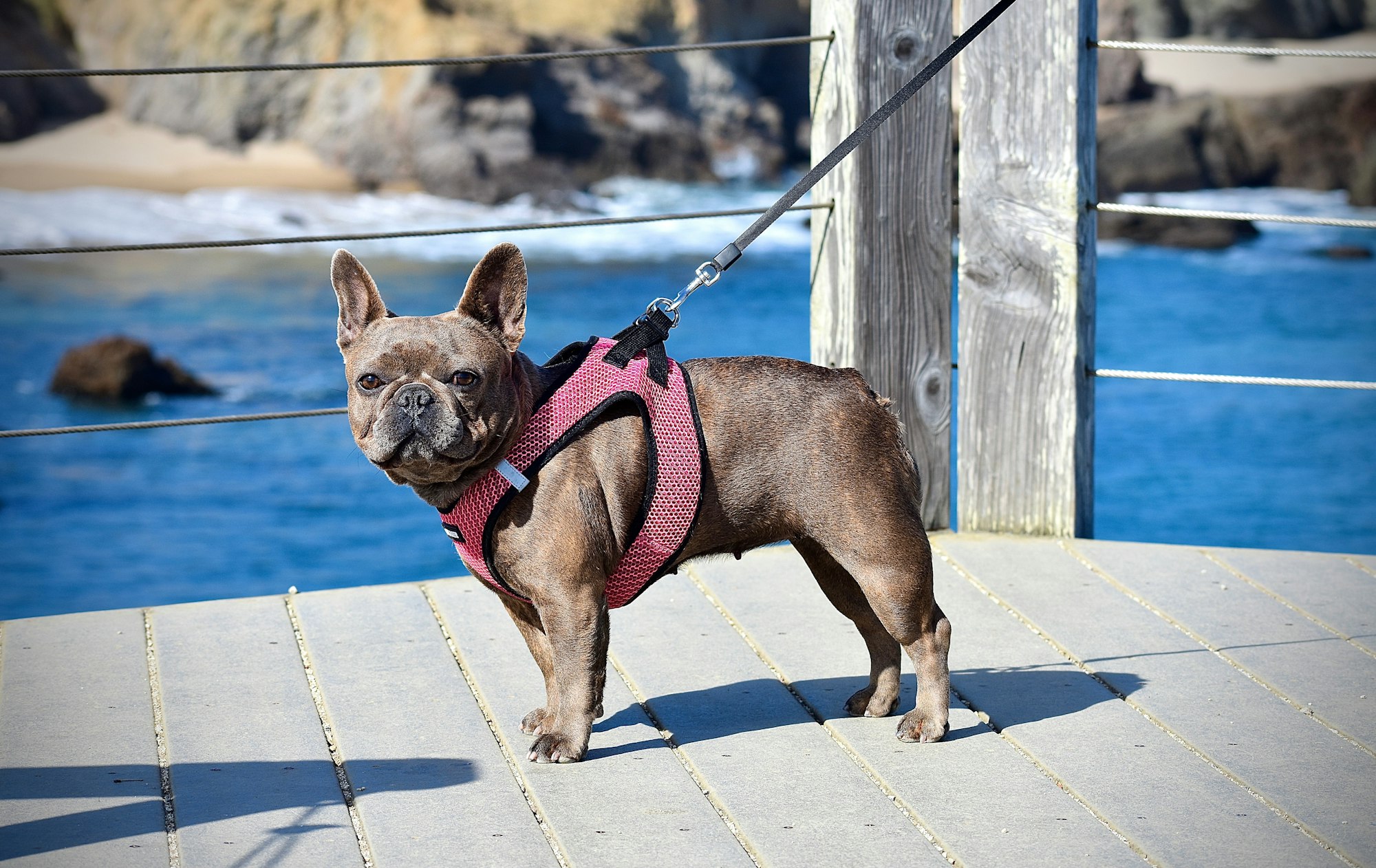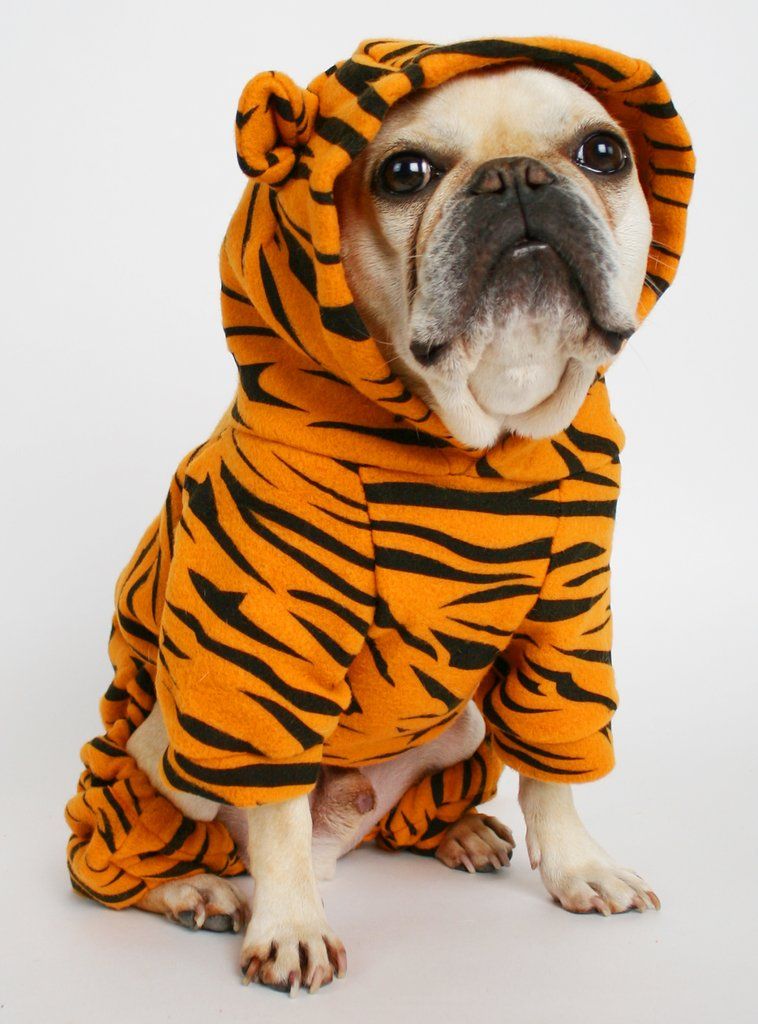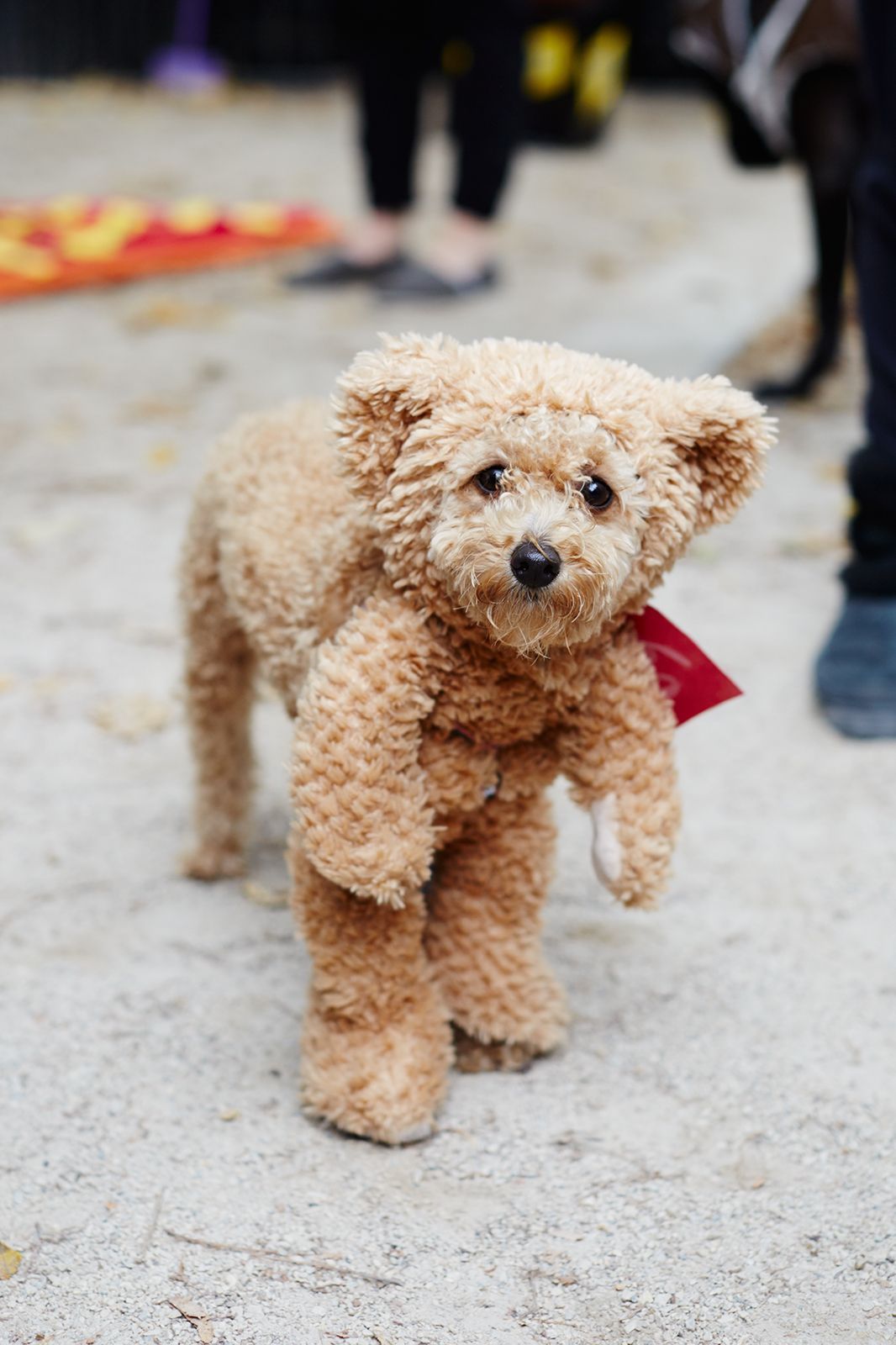Get ready for an adventure, dog lovers! We know that taking our friends for a walk is one of the best bonding experiences we can share, but getting them all harnessed up can sometimes feel like a wild game of Twister.
Fear not, fellow pooch enthusiasts, because we're here to break down the simple process of putting on a dog harness. With our quirky yet professional guide, you'll have your four-legged companion geared up and ready to strut their stuff in no time. Let's unleash the fun and dive into the wonderful world of dog harnesses!
What is a Dog Harness?
A dog harness is a piece of equipment used to safely control and restrain a dog. It fits securely around the dog’s torso, with straps that clip together at the shoulders and around the chest. Harnesses provide more control over a dog than a collar does, as the force is more evenly distributed across the chest and shoulders instead of at the neck. They are also ideal for pets with conditions such as tracheal collapse, which can be aggravated by a collar.

6 Different Types of Dog Harnesses
- The Back-Clip Harness: A Canine Classic
The back-clip harness is your go-to choice for a snazzy and straightforward option. Designed with a D-ring attachment on the back, this harness is perfect for dogs who are gentle on the leash and have mastered the art of walking without pulling. Best of all, the back-clip harness comes in a variety of colors and patterns, making it a fashion-forward choice for your stylish pup.

- The Front-Clip Harness: Pawsome Pull-Control
Does your furry friend have a case of the "zoomies" while on a walk? The front-clip harness is here to save the day! With a D-ring attachment located at the chest, this harness gives you more control over your dog's movements. It can help reduce pulling and teach your pooch to walk calmly beside you. Plus, it's a fantastic training tool for the aspiring doggy manners expert.
- The Dual-Clip Harness: The Best of Both Worlds
Can't decide between a back-clip and front-clip harness? The dual-clip harness has got you covered! Equipped with both a front and back attachment, this versatile harness allows you to switch between the two based on your dog's behavior or training needs. With the dual-clip harness, you'll have your pup walking like a pro in no time.
- The Step-In Harness: A Leg-Up on Comfort
For those pups who need a little extra TLC, the step-in harness is a dream come true. Designed with comfort in mind, this harness features a simple, easy-to-use design that your dog can literally step into. Once your pooch has placed their front legs through the openings, just snap the harness shut and secure it around their back. The step-in harness is perfect for dogs with sensitive skin or those who simply prefer a more relaxed fit.
- The Fashion Dog Harness: Strutting in Style
If you're looking to combine practicality with pizzazz, the fashion dog harness is the perfect choice for your trendy tail-wagger. These harnesses come in a variety of eye-catching designs, patterns, and materials, allowing your furry fashionista to make a statement while staying secure. From dazzling rhinestones and glittering sequins to chic faux-leather and trendy patterns, there's a fashion dog harness for every stylish pup. With this fabulous harness, your canine companion will be turning heads and wagging tails on every walk!
- The Overhead Harness: A Head-Turning Choice
For pet parents who want a secure and easy-to-use harness, the overhead harness is a top-notch option. This type of harness is designed to slip over your dog's head and rest comfortably on their shoulders and chest, providing a snug fit and even distribution of pressure.
After it's in place, simply buckle the harness around your dog's torso and adjust the straps for a custom fit. The overhead harness is an excellent choice for dogs of all shapes and sizes, offering added security and comfort during your fun-filled walks together.
How to Put On a Dog Harness
Putting on a dog harness might seem like a challenge, but with a little practice, you and your canine companion will be experts in no time! Here's a step-by-step guide to help you secure that harness like a pro:
Identify the type of harness: First, make sure you know which type of harness you have. This will help you understand the proper way to put it on. Check for distinguishing features like back or front clips, a step-in design, or an overhead style.
Get your dog in the right position: Have your dog stand or sit in a calm and relaxed manner. If your dog is fidgety or overly excited, take a few moments to let them settle down. You can try letting the tire out with a puzzle toy or an activity before the walk.

For back-clip, front-clip, and dual-clip harnesses:
- Hold the harness by the handle or the back-clip attachment, so the straps are facing the ground.
- Guide your dog's head through the opening of the harness, making sure it rests on their shoulders and chest.
- Lift your dog's front leg and place it through the respective loop, then repeat with the other leg.
- Buckle the harness around your dog's torso and adjust the straps for a snug but comfortable fit.
For step-in harnesses:
- Lay the harness flat on the ground with the straps facing up.
- Have your dog step into the openings with their front legs.
- Pull the harness up around your dog's back and secure the buckle.
- Adjust the straps to ensure a comfortable and secure fit.
For overhead harnesses:
- Slip the harness over your dog's head, ensuring it rests on their shoulders and chest.
- Buckle the harness around your dog's torso and adjust the straps for a snug but comfortable fit.
Double-check the fit: You should be able to fit two fingers between the harness and your dog's body. If it's too tight or too loose, readjust the straps accordingly.
Attach the leash: Depending on the type of harness, clip the leash to the appropriate D-ring, either at the front, back, or both.
Most Important - reward your dog: Give your pup a treat or some praise for being patient and cooperative during the process.
Now you're ready to hit the streets with your harnessed-up hound! Remember, practice makes perfect, and soon you'll be a dog harness pro.
How Tight Should a Dog Harness Be?
A well-fitted dog harness is crucial for both your dog's comfort and safety. Ensuring the right fit not only keeps your pup secure but also prevents any discomfort or injuries caused by an ill-fitting harness.
Comfort
The perfect fit for a dog harness should be snug but not too tight. You want to make sure the harness is secure enough to prevent your dog from wriggling out of it but not so tight that it causes chafing, restricts movement, or affects their breathing. Here's a simple guideline to follow:
Use the two-finger rule: Once the harness is on, you should be able to slide two fingers between the harness and your dog's body comfortably. This ensures that the harness is snug but not overly tight.
Check for rubbing or chafing: Look for any signs of rubbing or chafing after your dog has worn the harness for a walk. If you notice any redness, adjust the straps or consider trying a different harness style.
Safety
A proper-fitting harness is essential for your dog's safety while out on walks. A loose harness can lead to your dog slipping out and potentially getting lost or injured. To maintain a safe and secure fit, keep these tips in mind:
Adjust straps regularly: Your dog's size can change over time due to growth, weight fluctuations, or even a new haircut. Regularly check and adjust the straps to maintain the correct fit.
Monitor wear and tear: Inspect your dog's harness for any signs of wear, fraying, or damage. Replace the harness if it shows signs of weakness or no longer fits your dog properly.
Choose the right style: Select a harness that suits your dog's size, breed, and walking habits. Some harness styles offer better control for strong pullers, while others prioritize comfort for sensitive-skinned dogs.
How to Measure for a Harness Correctly
To find the perfect fit for your dog's harness, it's essential to measure their body accurately. Here's a guide on how to properly measure your dog's chest, neck, and length to ensure they're comfortable and secure in their new harness.
Chest
The chest measurement is critical for ensuring the right fit, as it provides the most support and control for your dog.
- Have your dog stand in a natural position.
- Locate the widest part of their chest, usually right behind their front legs.
- Use a soft measuring tape or a string and ruler to measure around their chest, making sure the tape is snug but not tight.
- Add a couple of inches to the measurement for comfort and room to grow, especially if your dog is still growing or between sizes.
Neck
The neck measurement is essential for overhead harnesses, as it helps to determine the correct size for slipping the harness over your dog's head.
- Have your dog stand in a natural position.
- Measure around the base of their neck, where a collar would normally sit.
- Use a soft measuring tape or a string and ruler to measure around their neck, making sure the tape is snug but not tight.
- Add an inch or two for comfort and ease of putting on the harness.
Length
While not always needed for sizing a harness, the length measurement can help you select a style that provides the right coverage and support for your dog.
- Have your dog stand in a natural position.
- Locate the base of their neck (where the collar would sit) and the base of their tail.
- Use a soft measuring tape or a string and ruler to measure the distance between these two points.
- Use the length measurement to guide your choice of harness style, making sure it offers the desired coverage and support for your dog.
The Pros and Cons of Harnesses and Collars
Pros of a Harness
- Offers better control - The harness places the leash attachment at the chest or lower back, which allows for better control over the dog’s movements, especially when walking or running.
- Provides more security - The harness provides a secure fit that is less likely to slip off or loosen compared to a collar.
- Reduces pulling and jumping - The pressure caused by the harness being attached to the chest or lower back makes it more uncomfortable and difficult for the dog to pull, jump or “lunge”, while a collar would allow more freedom of movement.
- Evenly spreads out the force - Harnesses evenly distribute the force throughout the dog’s abdominal area instead of only focusing on the dog’s neck, decreasing the risk of injury.
Cons of a Harness
- Can be more difficult to put on - Because of their design, harnesses can sometimes be more difficult and/or time consuming to put on than a collar.
- Can be inconvenient for certain activities - Harnesses should not be used for activities such as biking or rollerblading, requiring owners to carry and use both a collar and a harness.
Wearing a GPS collar in tandem with a Harness
If you're looking for the best of both worlds, wearing a Fi GPS collar in tandem with a harness is a great option. A GPS collar allows you to keep track of where your pup is at all times and it provides security for your dog by attaching at the collar instead of around the neck. A GPS collar also ensures proper fit on the dog since the collar is adjustable and should not be too tight or too loose. This provides a perfect balance between the control from using a harness and the convenience of using a collar.
Our Final Thoughts on How To Put on a Dog Harness
Putting on a dog harness can seem overwhelming at first, but with a little patience and practice, it can become a breeze. Make sure you know which type of harness you have and follow the specific instructions for putting it on.
Remember to check for a comfortable and snug fit and adjust the straps accordingly. A well-fitted harness is crucial for your dog's comfort and safety, so take the time to measure your dog's body accurately to find the right size.
Consider the pros and cons of using a harness versus a collar and choose the option that works best for your dog's needs. And don't forget to reward your pup for being patient and cooperative during the process!
Get more expert advice on pet-parenting by visiting the Off Leash blog at TryFi.com.
TryFi's The Fi Dog Collar is a must-have for any pet parent, it's a GPS tracking collar that helps you keep tabs on your dog's location, activity, and sleep patterns, and alerts you if they escape your backyard. Try the Fi Dog Collar today!

